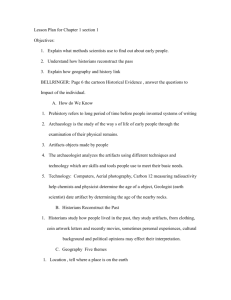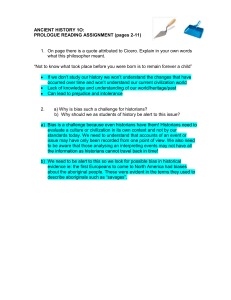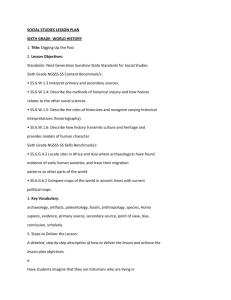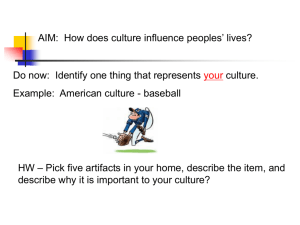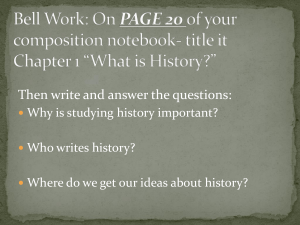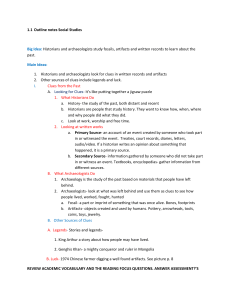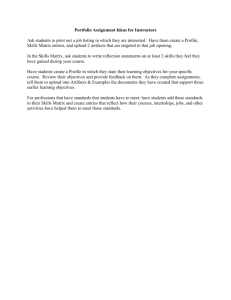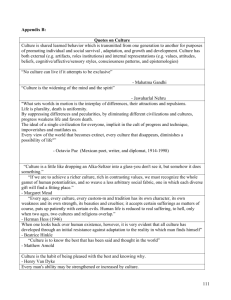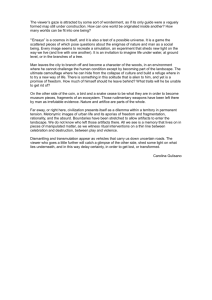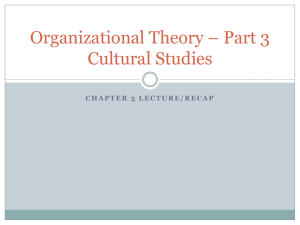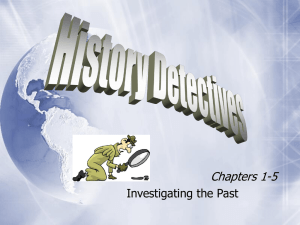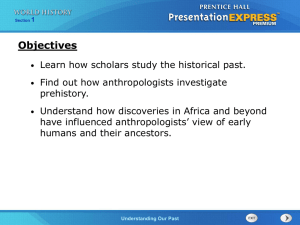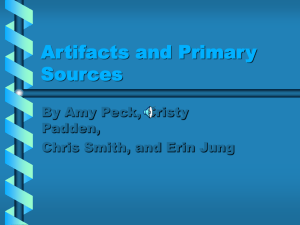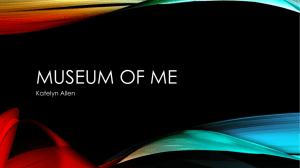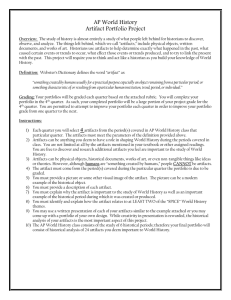INTRODUCTION TO MATERIAL CULTURE STUDIES: A CRASH
advertisement
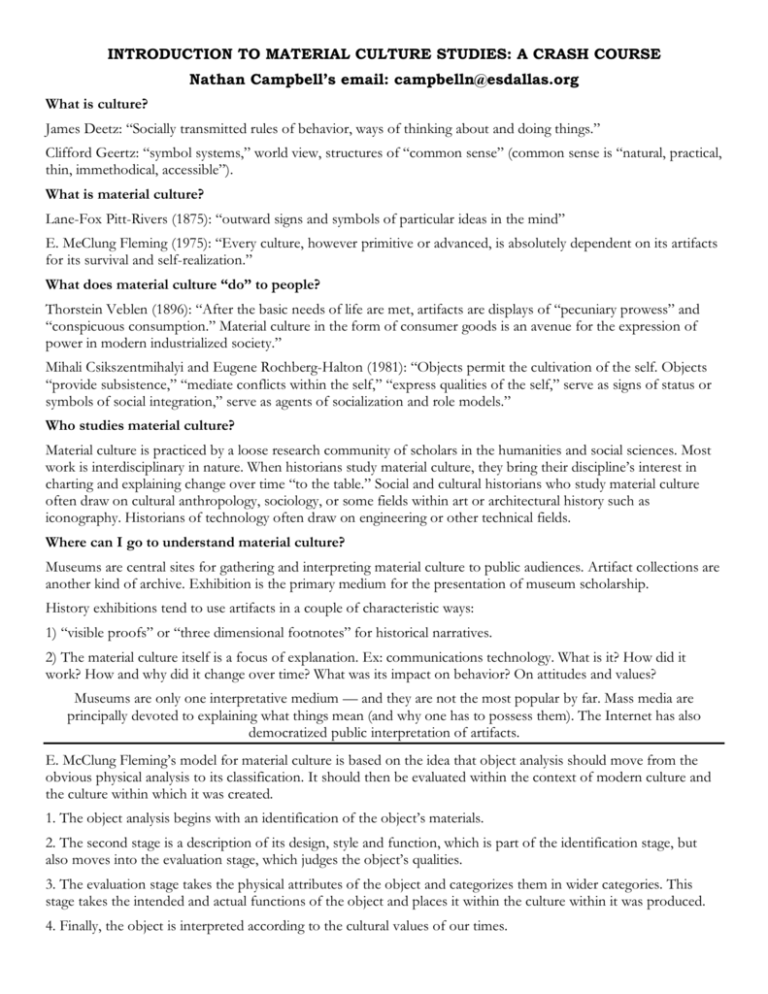
INTRODUCTION TO MATERIAL CULTURE STUDIES: A CRASH COURSE Nathan Campbell’s email: campbelln@esdallas.org What is culture? James Deetz: “Socially transmitted rules of behavior, ways of thinking about and doing things.” Clifford Geertz: “symbol systems,” world view, structures of “common sense” (common sense is “natural, practical, thin, immethodical, accessible”). What is material culture? Lane-Fox Pitt-Rivers (1875): “outward signs and symbols of particular ideas in the mind” E. MeClung Fleming (1975): “Every culture, however primitive or advanced, is absolutely dependent on its artifacts for its survival and self-realization.” What does material culture “do” to people? Thorstein Veblen (1896): “After the basic needs of life are met, artifacts are displays of “pecuniary prowess” and “conspicuous consumption.” Material culture in the form of consumer goods is an avenue for the expression of power in modern industrialized society.” Mihali Csikszentmihalyi and Eugene Rochberg-Halton (1981): “Objects permit the cultivation of the self. Objects “provide subsistence,” “mediate conflicts within the self,” “express qualities of the self,” serve as signs of status or symbols of social integration,” serve as agents of socialization and role models.” Who studies material culture? Material culture is practiced by a loose research community of scholars in the humanities and social sciences. Most work is interdisciplinary in nature. When historians study material culture, they bring their discipline’s interest in charting and explaining change over time “to the table.” Social and cultural historians who study material culture often draw on cultural anthropology, sociology, or some fields within art or architectural history such as iconography. Historians of technology often draw on engineering or other technical fields. Where can I go to understand material culture? Museums are central sites for gathering and interpreting material culture to public audiences. Artifact collections are another kind of archive. Exhibition is the primary medium for the presentation of museum scholarship. History exhibitions tend to use artifacts in a couple of characteristic ways: 1) “visible proofs” or “three dimensional footnotes” for historical narratives. 2) The material culture itself is a focus of explanation. Ex: communications technology. What is it? How did it work? How and why did it change over time? What was its impact on behavior? On attitudes and values? Museums are only one interpretative medium — and they are not the most popular by far. Mass media are principally devoted to explaining what things mean (and why one has to possess them). The Internet has also democratized public interpretation of artifacts. E. McClung Fleming’s model for material culture is based on the idea that object analysis should move from the obvious physical analysis to its classification. It should then be evaluated within the context of modern culture and the culture within which it was created. 1. The object analysis begins with an identification of the object’s materials. 2. The second stage is a description of its design, style and function, which is part of the identification stage, but also moves into the evaluation stage, which judges the object’s qualities. 3. The evaluation stage takes the physical attributes of the object and categorizes them in wider categories. This stage takes the intended and actual functions of the object and places it within the culture within it was produced. 4. Finally, the object is interpreted according to the cultural values of our times.
